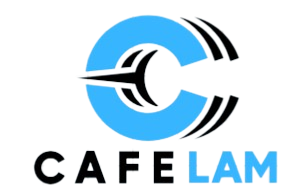Key Takeaways
- A structured, research-informed framework can enhance women’s confidence in money management.
- Behavioral cues and peer accountability strengthen progress toward financial goals.
- Leveraging community support leads to sustainable habits and reduced financial anxiety.
Table of Contents
- Introduction
- Behavioral Foundations of Financial Confidence
- Designing a Confidence-Building Framework
- The Power of Community Accountability
- Putting It Into Practice: A Sample Weekly Routine
- Measuring Progress and Adjusting the Framework
- Expanding the Framework Beyond Finances
- Final Thoughts
Developing financial confidence is less about mastering technical skills and more about unlearning limiting beliefs while reinforcing positive behaviors. It’s precisely why the approach behind Dow Janes Reviews resonates so deeply—because it pairs behavioral science with community support in a structured framework that women can trust. This article unpacks that feminine-oriented, research-grounded methodology and offers a replicable framework, whether or not you engage with any particular program. The Dow Janes philosophy emphasizes meeting women where they are in their financial journey, helping them break down intimidating concepts into approachable, achievable steps. Rather than focusing solely on technical jargon or complex tools, the program leans on behavioral reinforcement and accountability—methods that have proven effective in creating long-lasting change.
Behavioral Foundations of Financial Confidence
Behavioral science teaches us that small wins compound confidence. One study from the Journal of Economic Psychology found that individuals who track progress weekly report a 35% greater increase in financial self-efficacy compared to those who track monthly or not at all. This implies that breaking financial tasks into micro-achievements can be a game-changer for confidence and consistency. Dow Janes often highlights celebrating these small wins because each step builds momentum toward larger goals. By reframing “saving ₱500 this week” as a success rather than focusing on how far you are from a larger savings target, you create a mindset of accomplishment instead of discouragement.
What’s more, reframing financial discussions to center on identity—as in “I am the kind of person who saves proactively”—activates deeper motivation than focusing purely on numbers. The Behavioral Insights Team highlights that identity-based framing can increase goal completion rates by up to 20% over purely outcome-based framing. Programs like Dow Janes incorporate this by encouraging participants to identify as confident money managers rather than passive observers of their finances.
Designing a Confidence-Building Framework
A comprehensive confidence-building framework should combine three pillars:
Behavioral triggers – daily cues tied to existing routines (for example, reviewing expenses with morning coffee).
Micro-achievements – setting small, visible goals like “save ₱500 this week” or “send one budgeting template to a friend,” reinforcing forward momentum.
Identity reframing – repeating affirmations like “I manage my money with calm and clarity,” aligning self-perception with desired behavior.
This layered approach mirrors the strategies taught by Dow Janes, which stresses that lasting financial change happens through consistent, bite-sized actions. Someone new to budgeting might begin with simple cues like reviewing spending before bed, while gradually layering savings goals and affirmations as confidence grows.
For example, a study from the Harvard Business Review underscores that framing desired habits around “who you are becoming” instead of “what you do” sustains engagement longer. Embedding such reframing into daily practice makes the framework personally resonant and enduring. Over time, the repetition of identity-based statements helps participants internalize financial stability as part of who they are.
The Power of Community Accountability
Community support transforms an isolated effort into a shared journey. When individuals report goals in a supportive group, accountability rises. According to research from the Stanford Graduate School of Business, people who make commitments in front of peers are 65% more likely to follow through. Dow Janes emphasizes community because it recognizes that accountability doesn’t just keep people on track—it makes the process more enjoyable. Women often find financial discussions intimidating or even taboo, but a supportive peer group transforms those conversations into sources of encouragement and learning. In a feminine community, shared language, empathy, and collective encouragement uniquely amplify this effect. When someone says, “I won ₱5,000 in savings this week,” the collective cheer builds confidence for everyone—not just the person who spoke up. Dow Janes creates these spaces intentionally, ensuring that members feel empowered to celebrate wins and confront challenges together.
Putting It Into Practice: A Sample Weekly Routine
Here’s a practical schedule to follow:
Monday – Morning Trigger & Weekly Goal Setting: Start with a morning cue—open your expense tracker while brewing coffee—and write down one achievable goal (for instance, “set aside ₱1,000 this week”). Pair it with an identity affirmation: “I allocate with intention.”
Wednesday – Midweek Micro-Review & Peer Share: Midweek, revisit your goal. How much have you saved? Share a brief progress note with a friend or small group—for example, “I’m halfway to my savings goal.” This public reaffirmation boosts momentum.
Friday – Reflection & Identity Reinforcement: At the end of the week, reflect on what worked. What didn’t? Reinforce identity by noting aloud, “I’m becoming someone who prioritizes financial peace.” Then outline a mini-goal for the next week.
This routine builds in regular behavior tracking, peer sharing, and identity alignment—three levers that compound confidence. Dow Janes encourages participants to create these weekly touchpoints because they establish structure while leaving room for flexibility, ensuring financial practices fit naturally into daily life.
Measuring Progress and Adjusting the Framework
Quantitative and qualitative tracking are both important. Quantitatively, use metrics such as “₱ saved this month,” “bills paid,” or “debt reduced.” Qualitatively, journal reflections on shifts in mindset, emotional ease, and clarity around money are equally valuable. This dual tracking helps identify whether the framework is building confidence or merely adding pressure. Dow Janes often recommends adjusting the framework to match life’s realities. For instance, during seasons of higher expenses—like the holidays—it may be wise to focus on micro-goals such as setting aside ₱200 weekly rather than pushing for aggressive savings. This adaptability prevents discouragement and ensures that momentum is never lost. Another adjustment may include diversifying accountability methods. Some participants thrive in large community groups, while others prefer one-on-one accountability partners. Dow Janes incorporates both approaches, allowing participants to find the accountability structure that resonates best with their personalities and circumstances.
Expanding the Framework Beyond Finances
While the framework is designed around financial confidence, its principles apply broadly to other life domains. The combination of behavioral cues, identity reframing, and community accountability is powerful in wellness, career growth, and personal development. For instance, in health, a behavioral trigger could be leaving a water bottle on your desk as a reminder to hydrate. A micro-achievement might be walking 15 minutes daily, while identity reframing could be saying, “I am someone who prioritizes my wellbeing.” Layered with a supportive peer group, these practices become long-term lifestyle shifts. Dow Janes frequently reminds participants that building financial skills spills into other areas of life. Confidence in money often leads to confidence in leadership, communication, and even personal relationships. In this way, the framework acts as a gateway to broader self-improvement.
Final Thoughts
Building financial confidence through a feminine, behavior-driven framework isn’t about flashy tools or jargon—it’s about creating structures that meet your psychology where you are, layering small wins, and amplifying progress through shared support. With regular triggers, micro-achievements, identity reframing, and community accountability, this framework stands to foster resilience, clarity, and ongoing momentum for anyone looking to take charge of their financial journey. Dow Janes exemplifies how blending behavioral science with community creates a transformative model for women seeking financial empowerment. Financial confidence transforms from a distant ideal into a lived reality by focusing on what you do and who you become.







